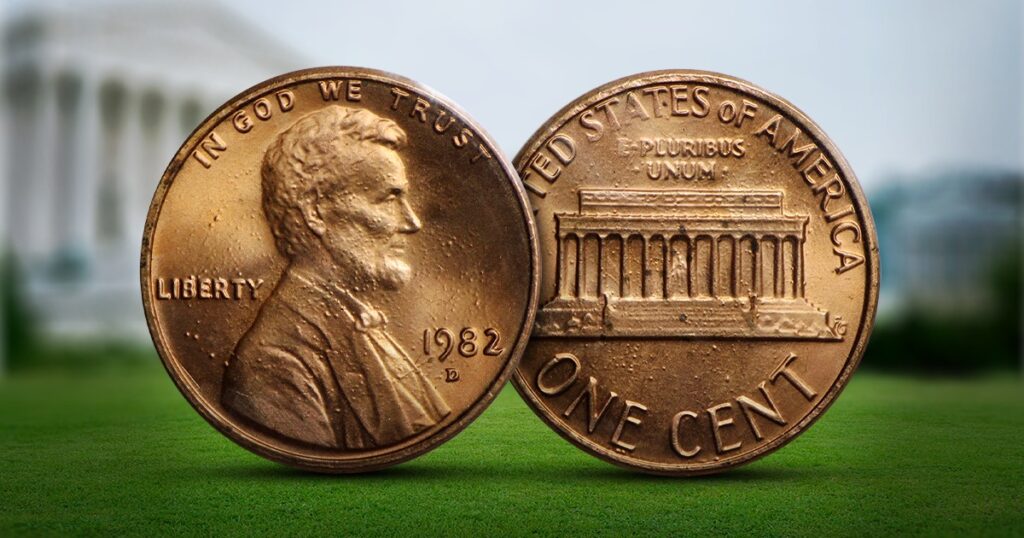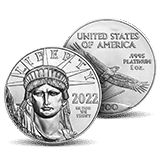
The United States one-cent coin, known as the penny, has circulated since 1793. The term “penny” is derived from the British penny, which is its equivalent in British pounds. Pennies were famously made from copper originally, but gradually became composed of a mixture of metal over time due to inflation and the need for copper during wartime.
How Many Pennies Are in Circulation?
Current estimates at the time of this article show about 240 billion pennies in circulation.

Above, you can see the number of pennies produced per year. The most recent was in 2024, when 3.2 billion pennies were made.
How Much Does it Cost to Produce Pennies?

While the value of a penny is one cent, or 1/100th of a dollar, the cost of creating pennies hasn’t always been less than a cent. In 1982, the composition changed to cheaper materials such as zinc to offset the cost of production. While costs have recovered, we have been losing money by producing pennies since 2006. The U.S. Mint reported a loss of $85.3M from the 3.2B pennies produced in 2024, the 19th consecutive fiscal year that cost more than their face value.
President Trump Orders U.S. Treasury to Stop Manufacturing the Penny
President Donald Trump ordered the U.S. Mint, through the Secretary of the U.S. Treasury, to halt penny production on February 10th, 2025, to save the government money. While an official act of Congress to officially discontinue the penny has yet to be issued as of the time of writing this article, penny production will likely cease sometime in 2025.
How Would the Penny be Removed From Circulation?
We’re all familiar with the clever pricing of products in retail stores ending in 0.99 cents. With the removal of the penny, cash transactions using this pricing structure would have to round down to 0.95 cents (unlikely for most retailers) or round up to the nearest dollar.
In Canada, cash transactions were rounded to the nearest five cents per transaction. This “rounding tax” would also likely be mirrored in the United States. However, the individual impact of the price change would be relatively minimal, as less than 20% of the transactions in the U.S. were conducted with cash. Canada reported that the tax cost their consumers and business owners approximately $3.27 million.
Many countries, besides Canada, have long since removed pennies from their currencies: Brazil, Norway, Sweden, Australia, Finland, and New Zealand.
While Trump ordered the discontinuation of minting pennies, he did not order them to be removed from circulation. When the penny is officially removed from distribution, there will be a national call to return pennies to the banks. When the pennies are returned to the banks, they will be sent to the Treasury to be melted down and used for other currency.
When Canada announced that they were discontinuing the penny in 2012, an estimated 3.5 billion of the 6 billion pennies in circulation were returned to the banks in just one year. There are still pennies being used as legal tender in Canada, so many are still in circulation. It will be up to our Congress to determine the specific terms of removing the penny if they decide to move forward with President Trump’s order.
Economic Impact of Phasing Out the Penny
The financial case for retiring the penny is compelling. According to the U.S. Mint, it cost 2.67 cents to produce a single penny in 2024, more than double its face value. That year alone, the production of 3.2 billion pennies resulted in a loss of $85.3 million, marking the 19th consecutive year of negative returns.
If penny production were halted permanently, the Mint could redirect those funds toward more cost-efficient coinage or broader fiscal initiatives. Additionally, fewer pennies in circulation would reduce logistics costs associated with shipping, handling, and storage in both the public and private sectors.
From an environmental standpoint, retiring the penny could reduce demand for zinc and copper mining, industries associated with significant ecological impact. This adds a sustainability dimension to the fiscal benefits.
Based on projections by economists and former Treasury officials, the U.S. government could save an estimated $900 million over the next decade by discontinuing the penny, assuming inflation and current production costs remain consistent.
Cultural Implications of Eliminating the Penny
While it will take many years for the penny to be completely phased out of use, what will it mean for American culture once it is truly gone?
There are common sayings and practices based on the penny. Only time will tell if these traditions continue or cease to exist:
Common sayings about pennies:
- “Penny pinchers”
- “A penny for your thoughts”
- “A penny saved is a penny earned”
- “Worth every penny”
- “A pretty penny”
- “Two cents”
- “In for a penny, in for a pound”
Common practices with pennies:
- Finding a face-up penny on the ground is considered good luck
- Pennies at cash registers for customers to use for exact change
- Floors and counters made of pennies and epoxy
Public Opinion on the Penny’s Future
The debate surrounding the penny is not solely economic, as many Americans strongly believe it should be discontinued. A 2023 YouGov poll found that 55% of U.S. adults supported eliminating the penny, 29% were opposed, and the remainder were unsure. Support for discontinuation was most substantial among younger age groups, likely due to their preference for digital payments and lesser use of physical coins.
Advocacy groups like Citizens to Retire the Penny argue that the coin’s continued production wastes taxpayer money and creates inefficiencies in commerce. On the other hand, organizations such as Americans for Common Cents say that removing the penny could result in “rounding inflation” and disproportionately affect low-income consumers.
Despite the differing perspectives, there is growing awareness of the penny’s diminishing practicality in today’s economy, especially as cash transactions continue to decline.




